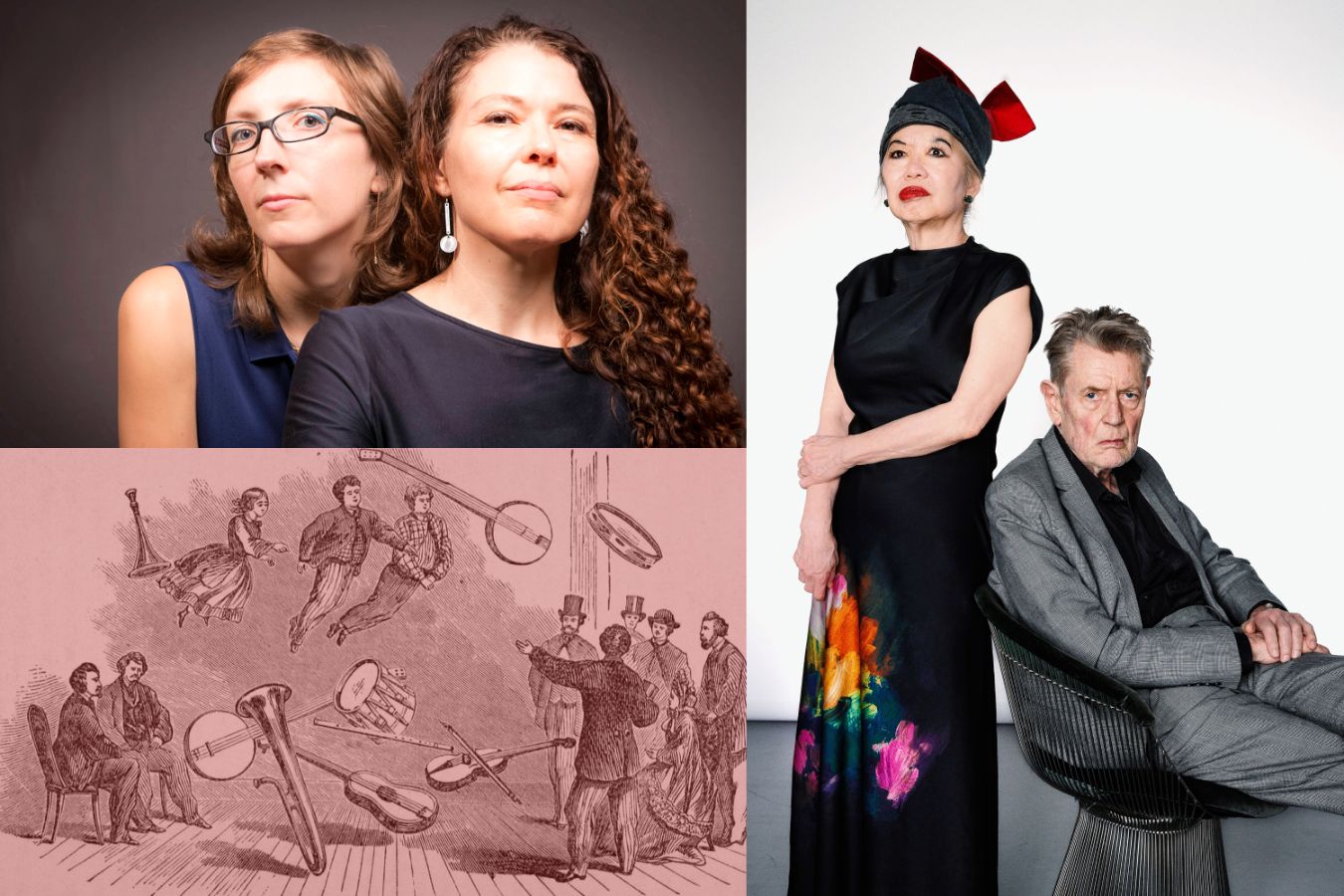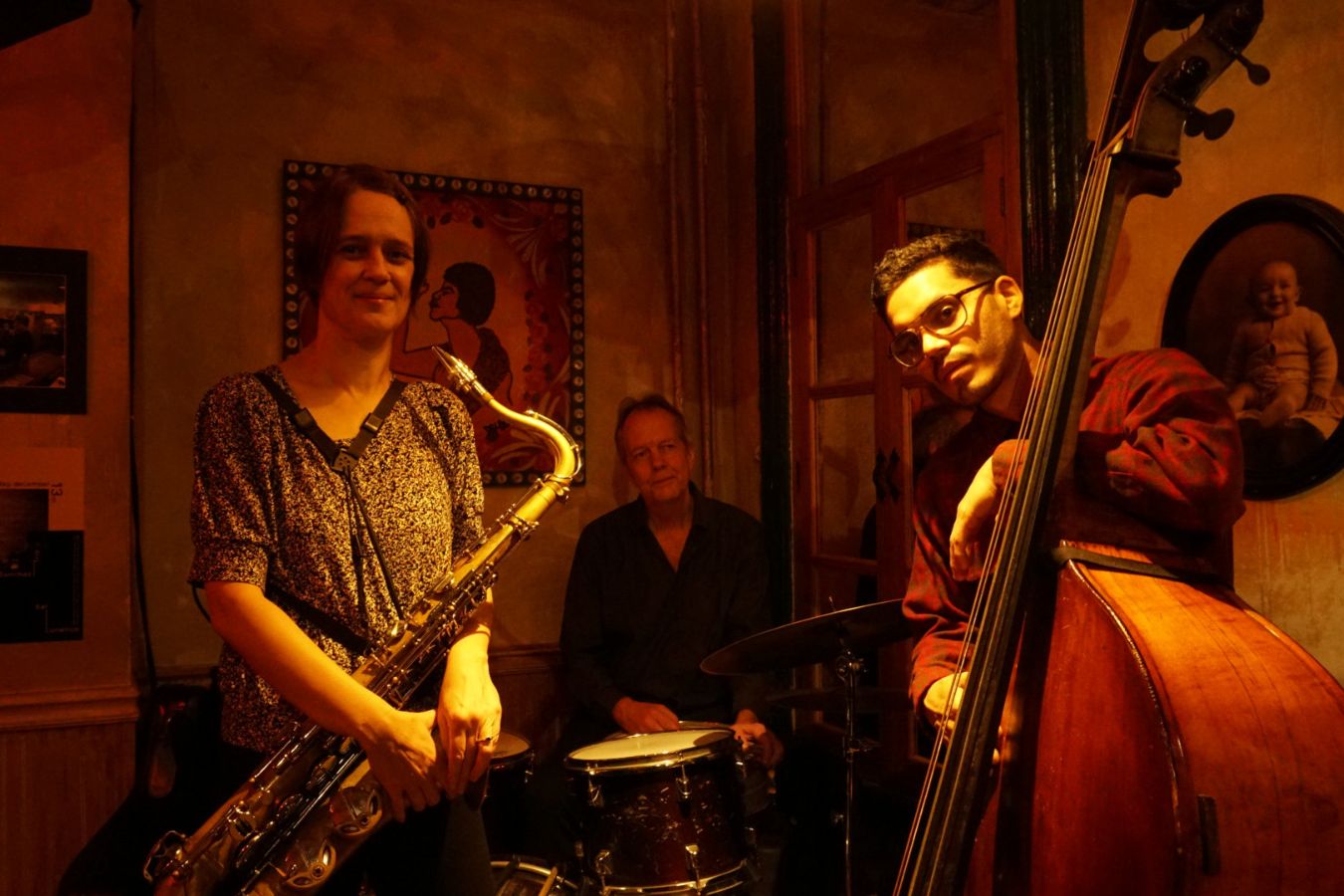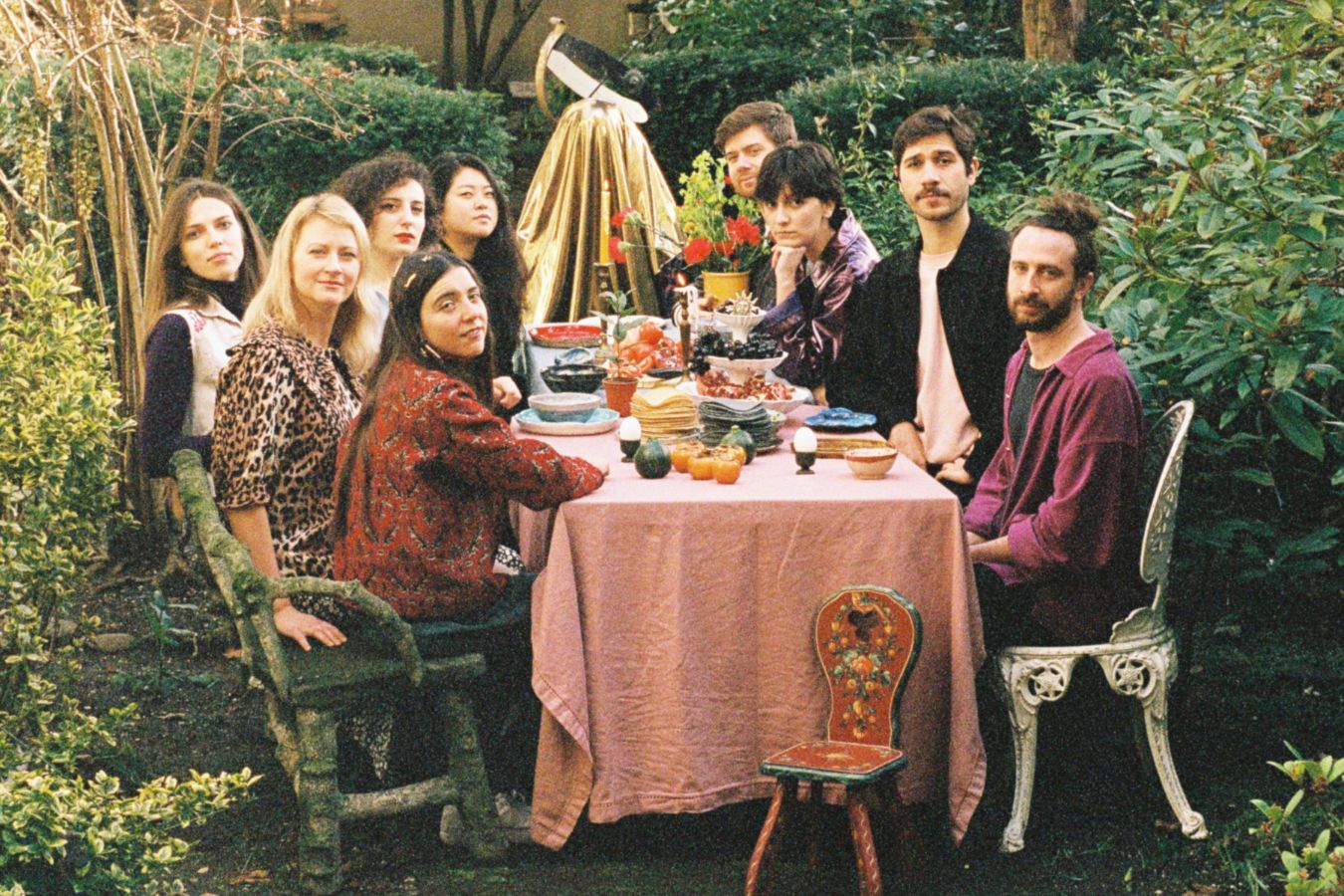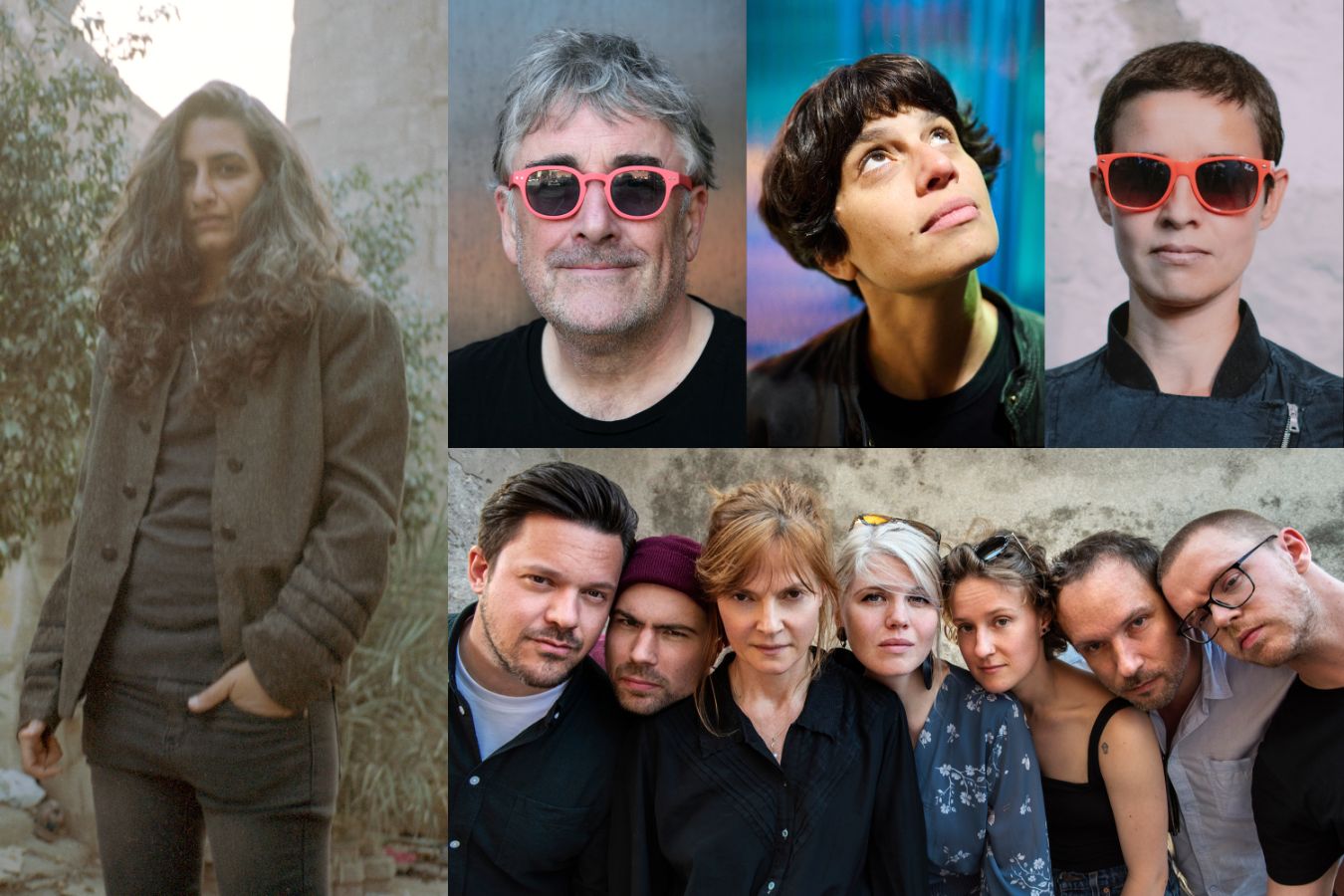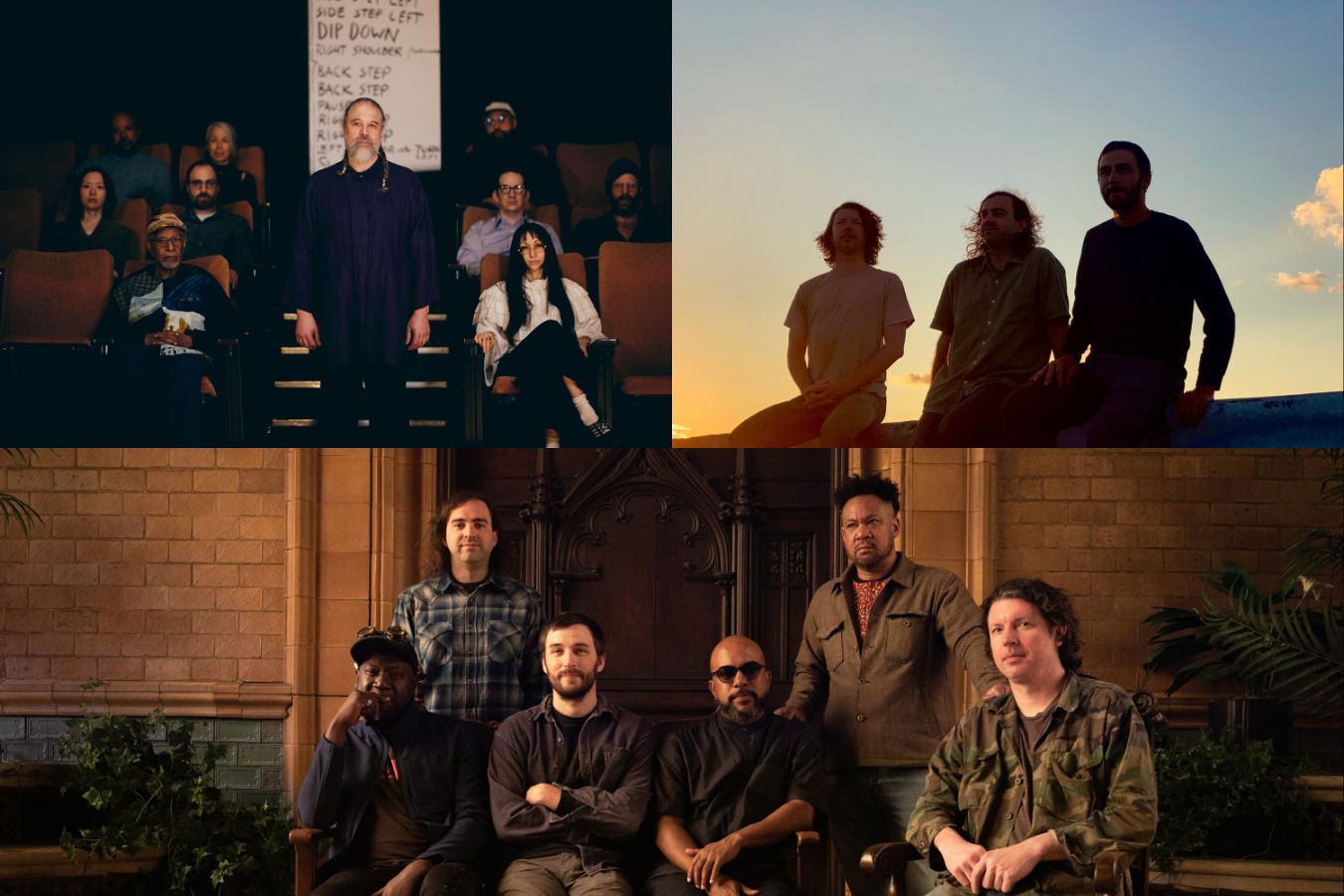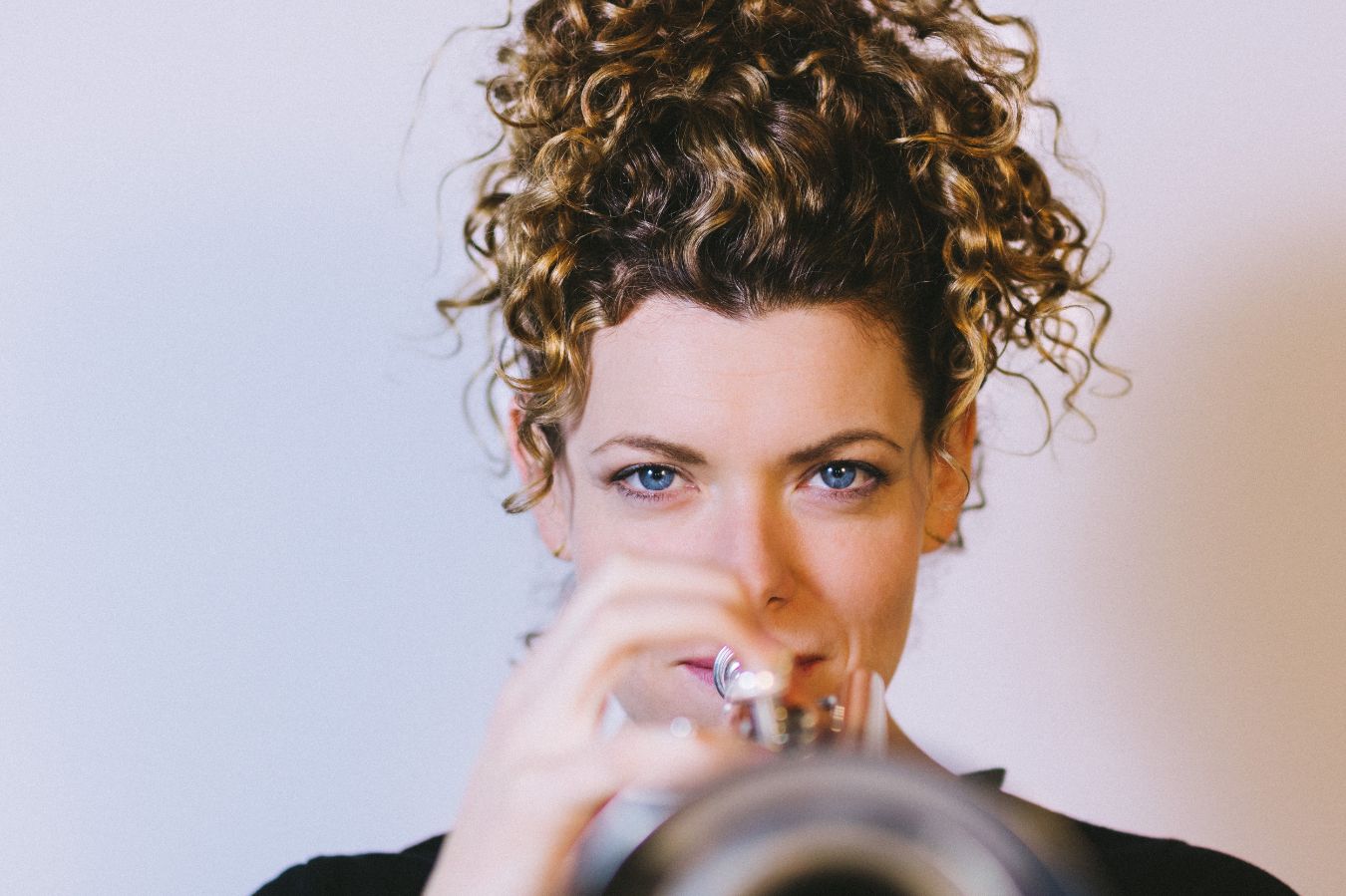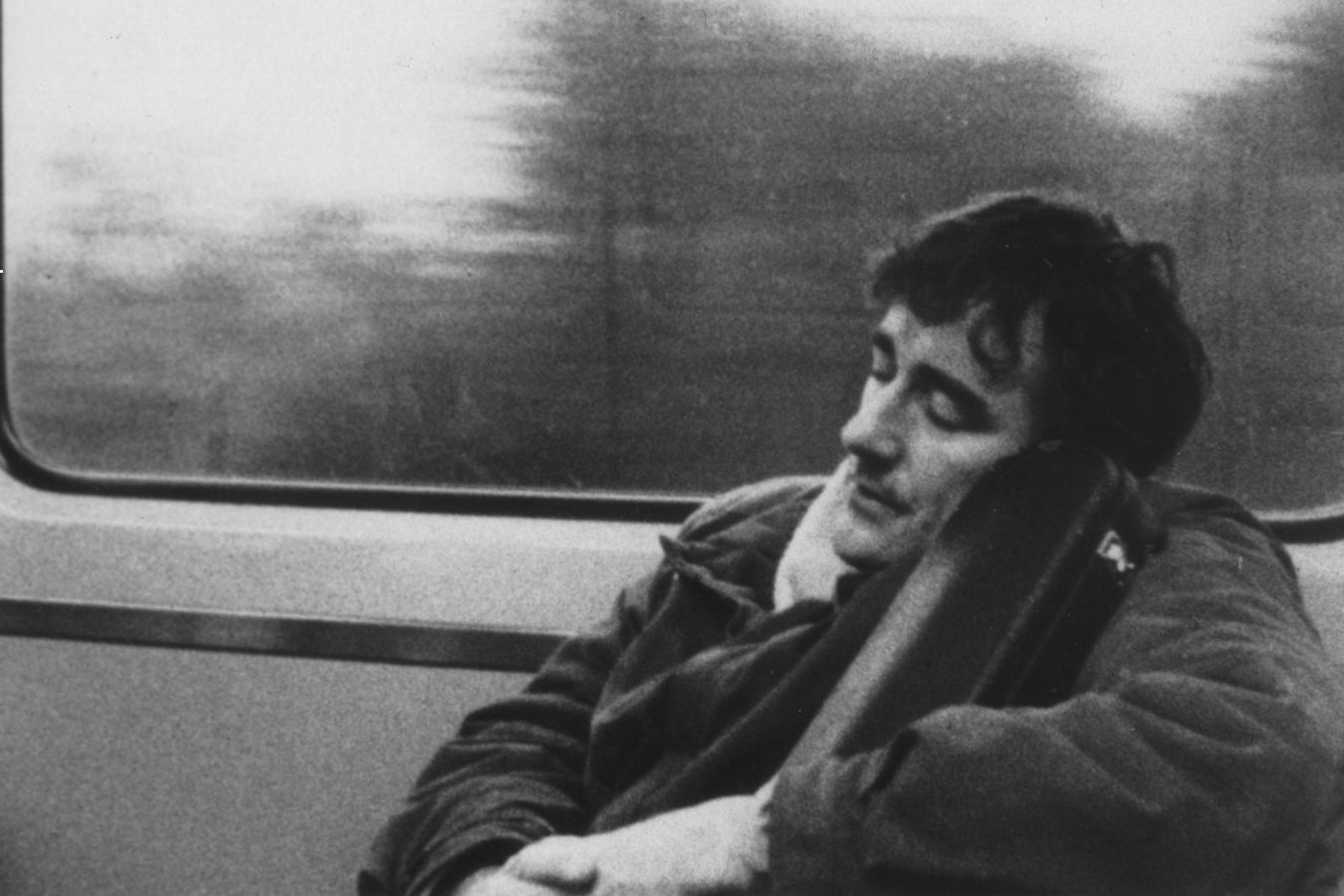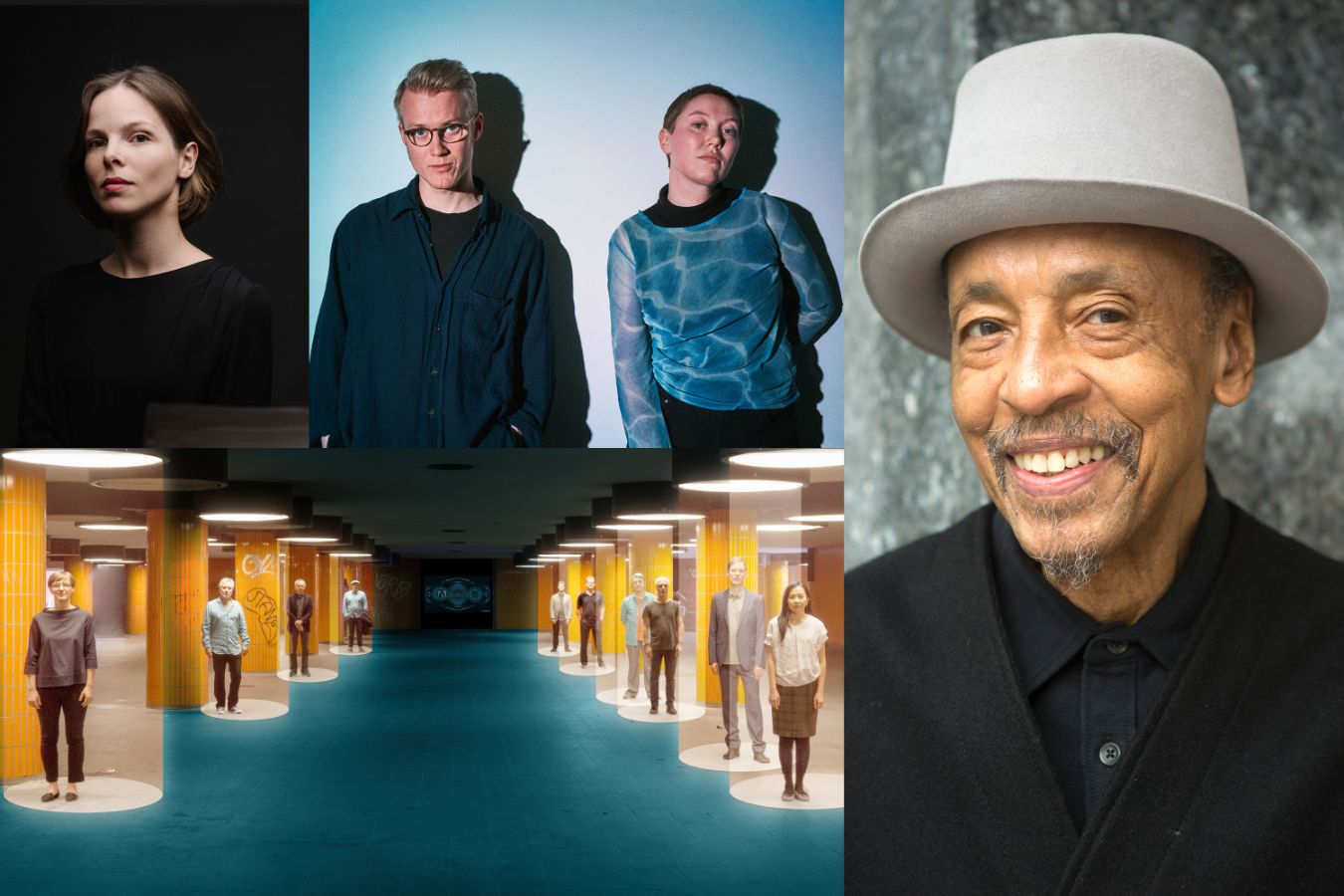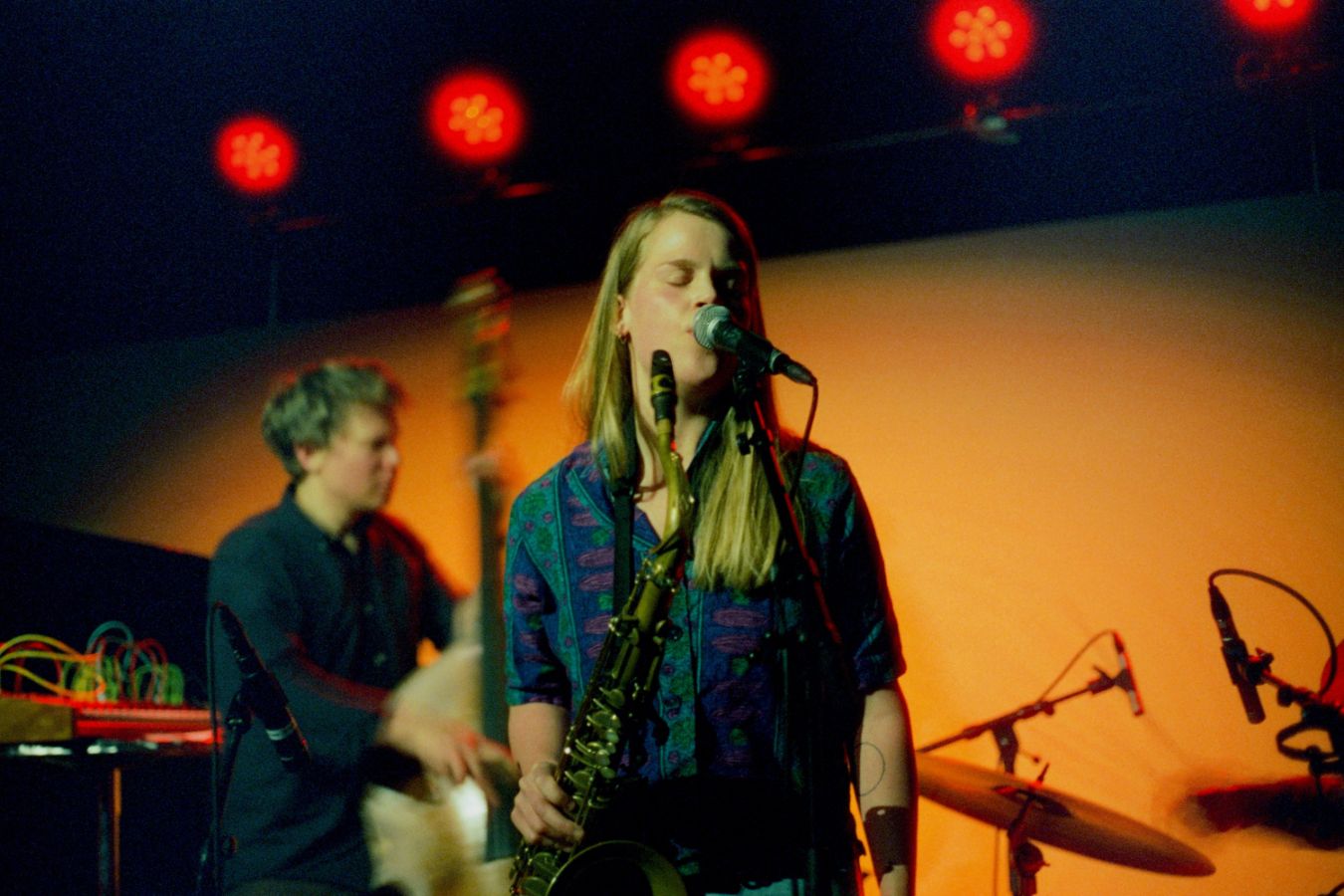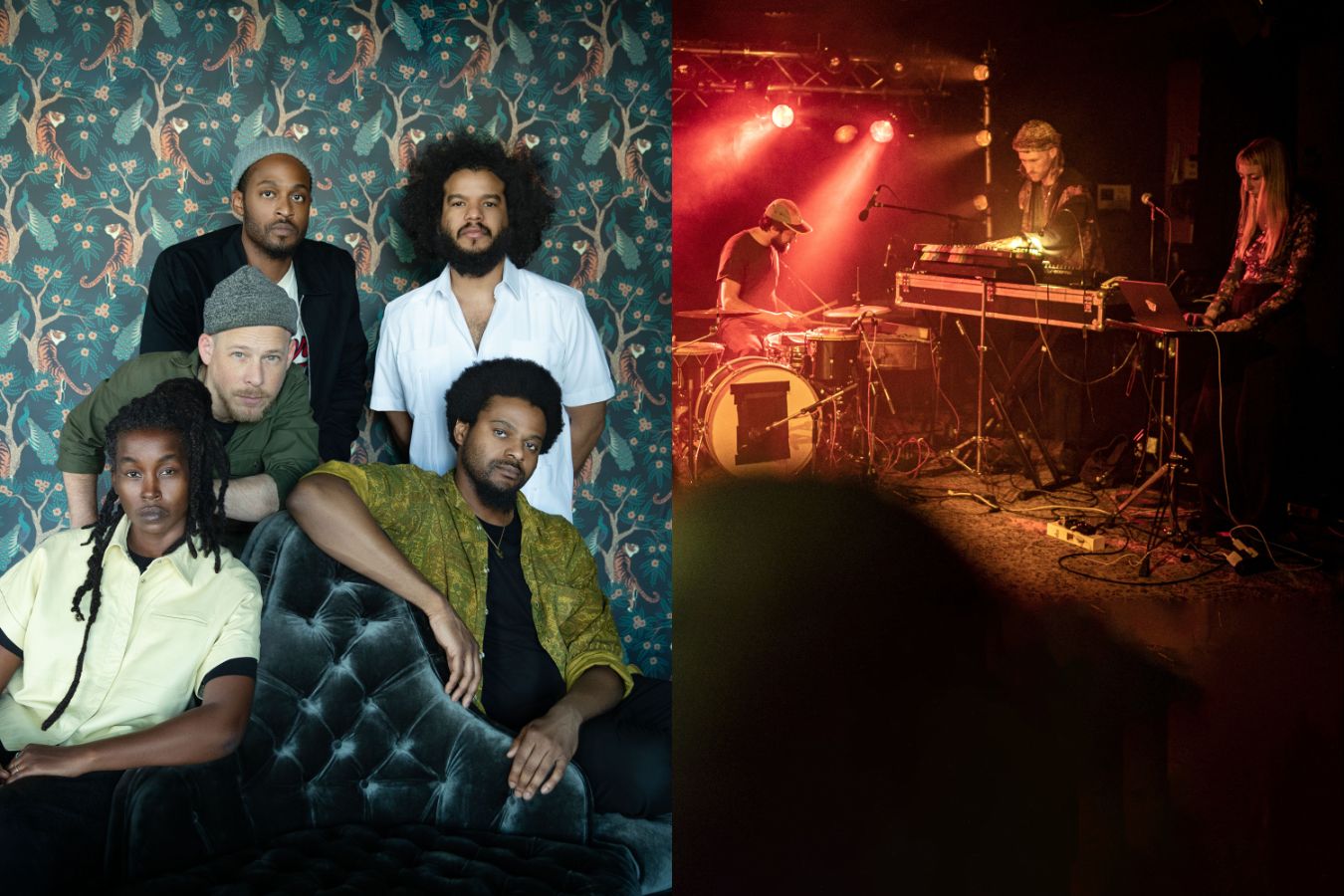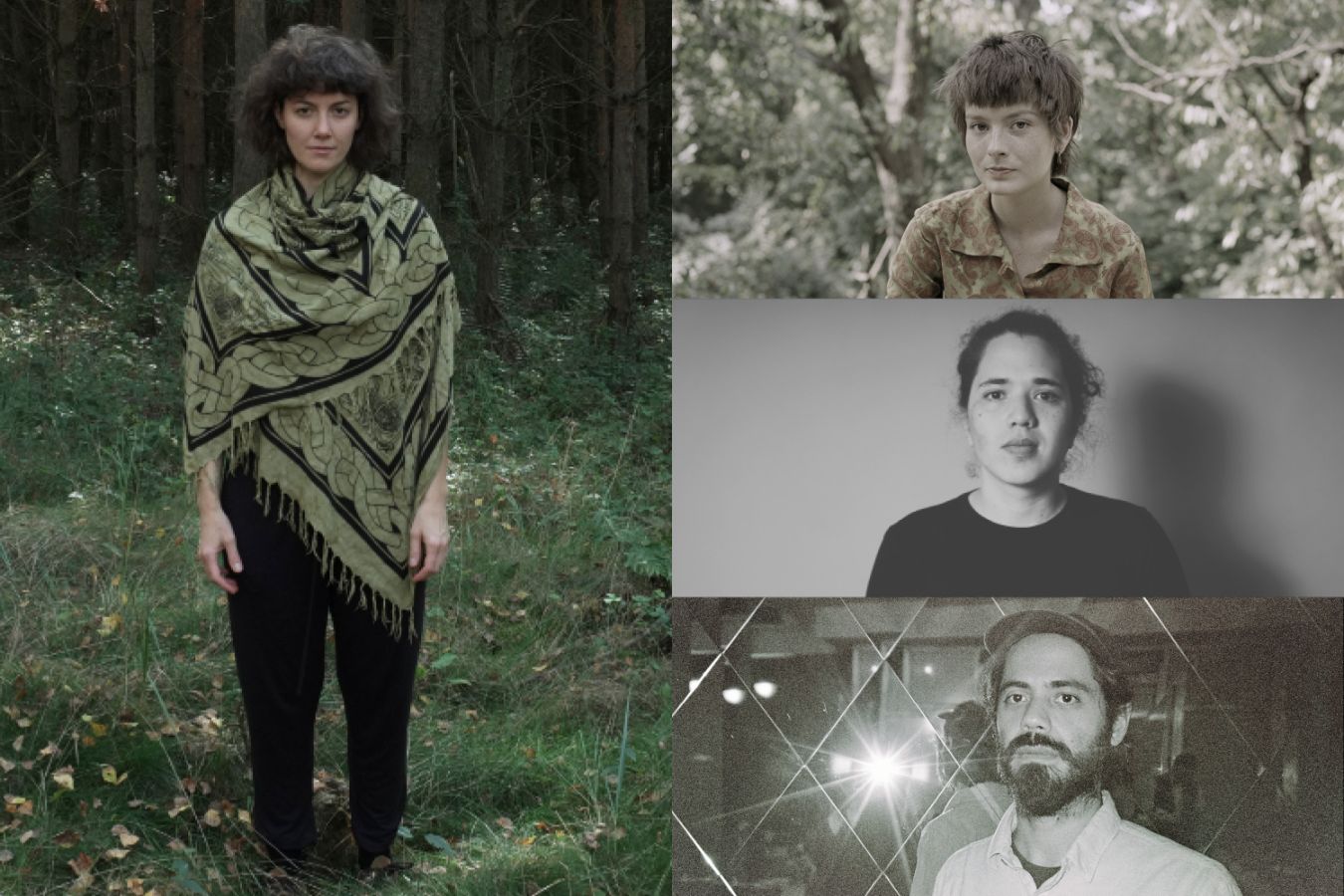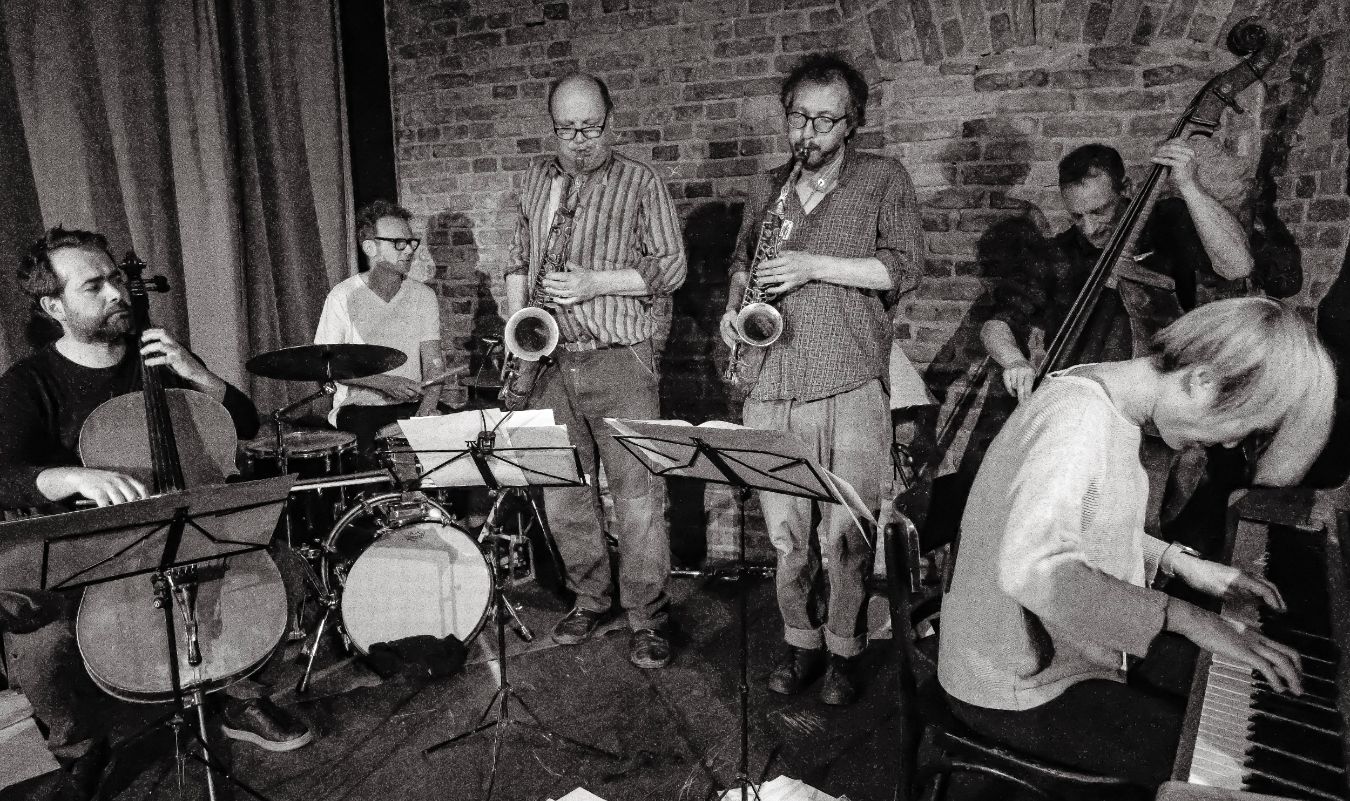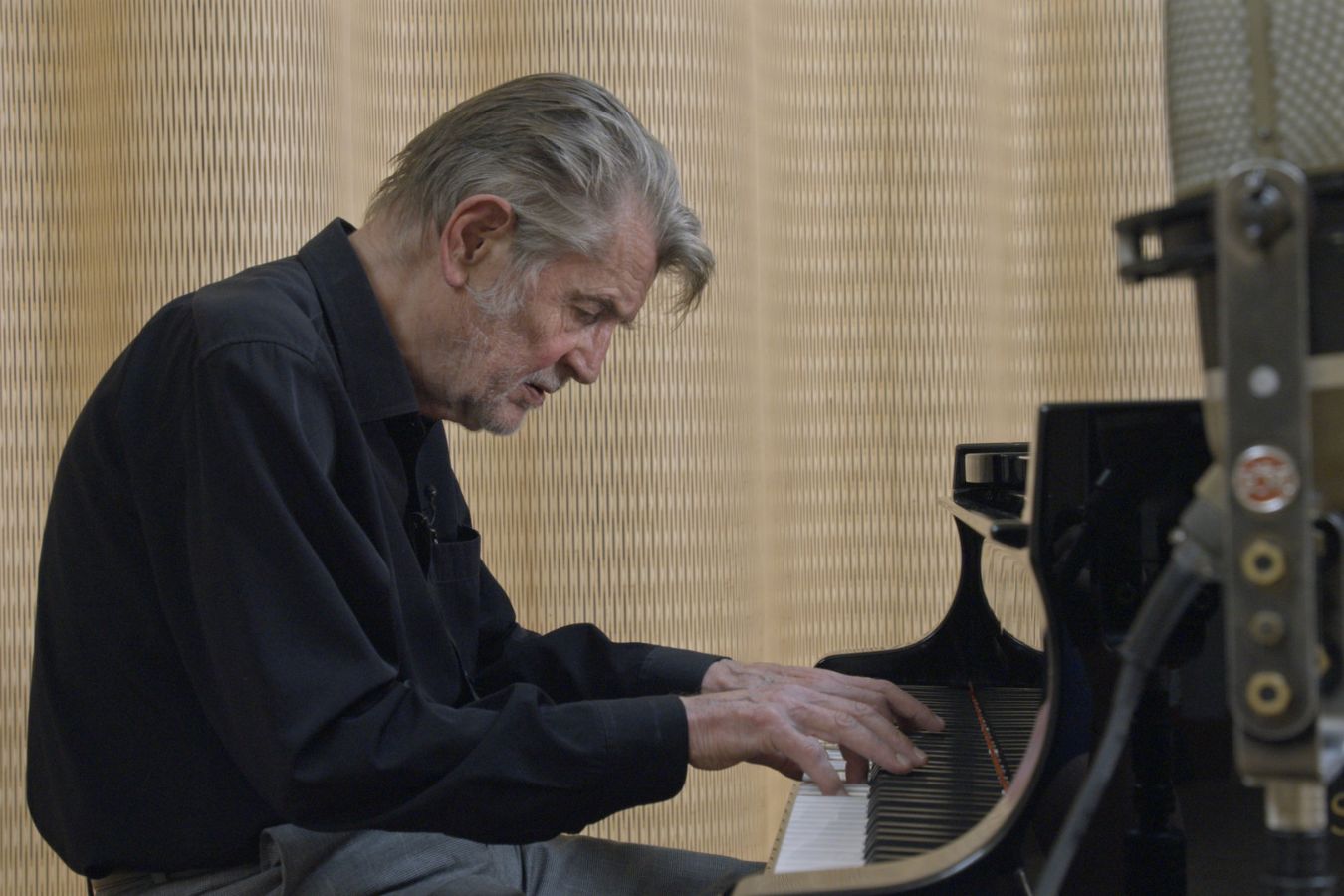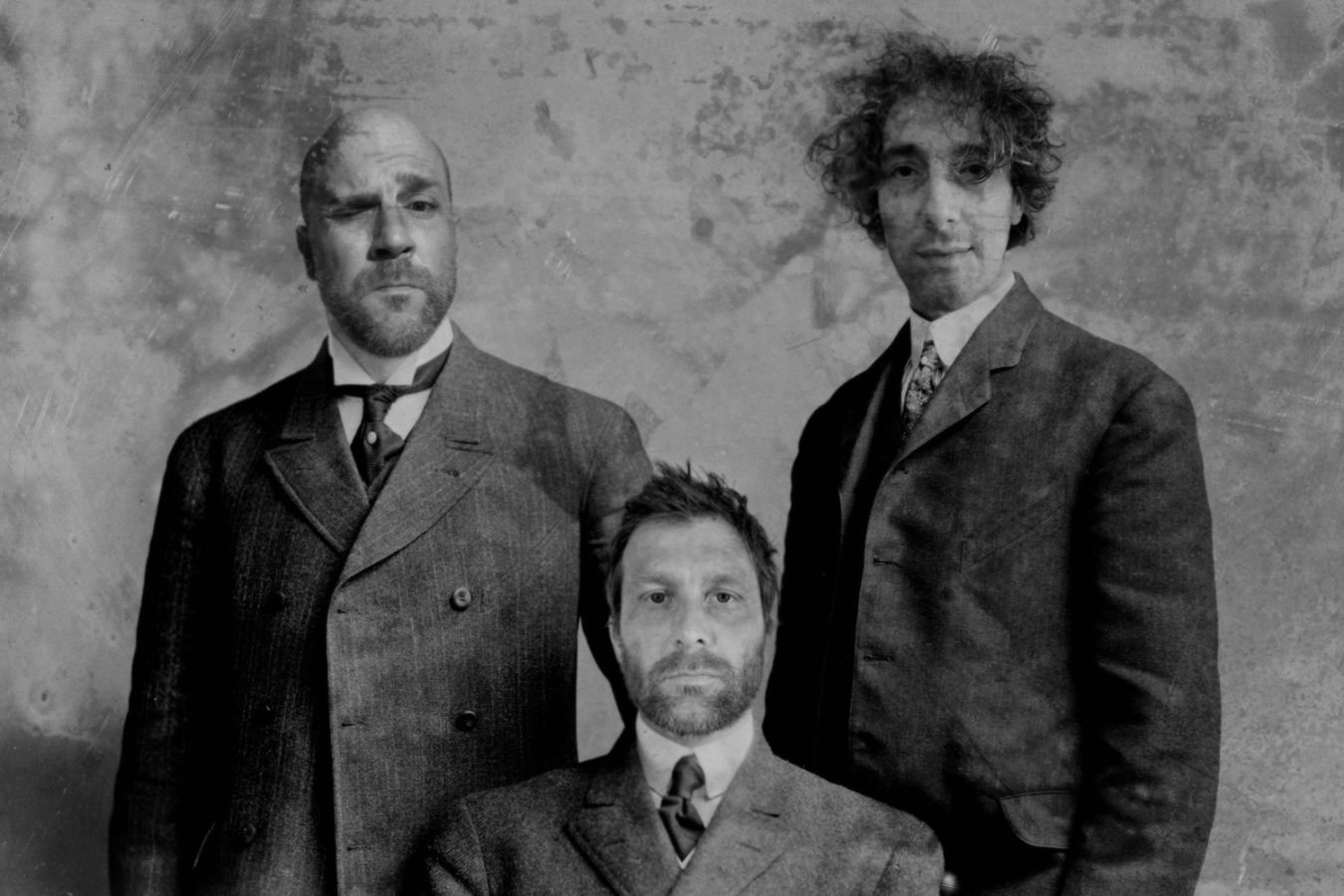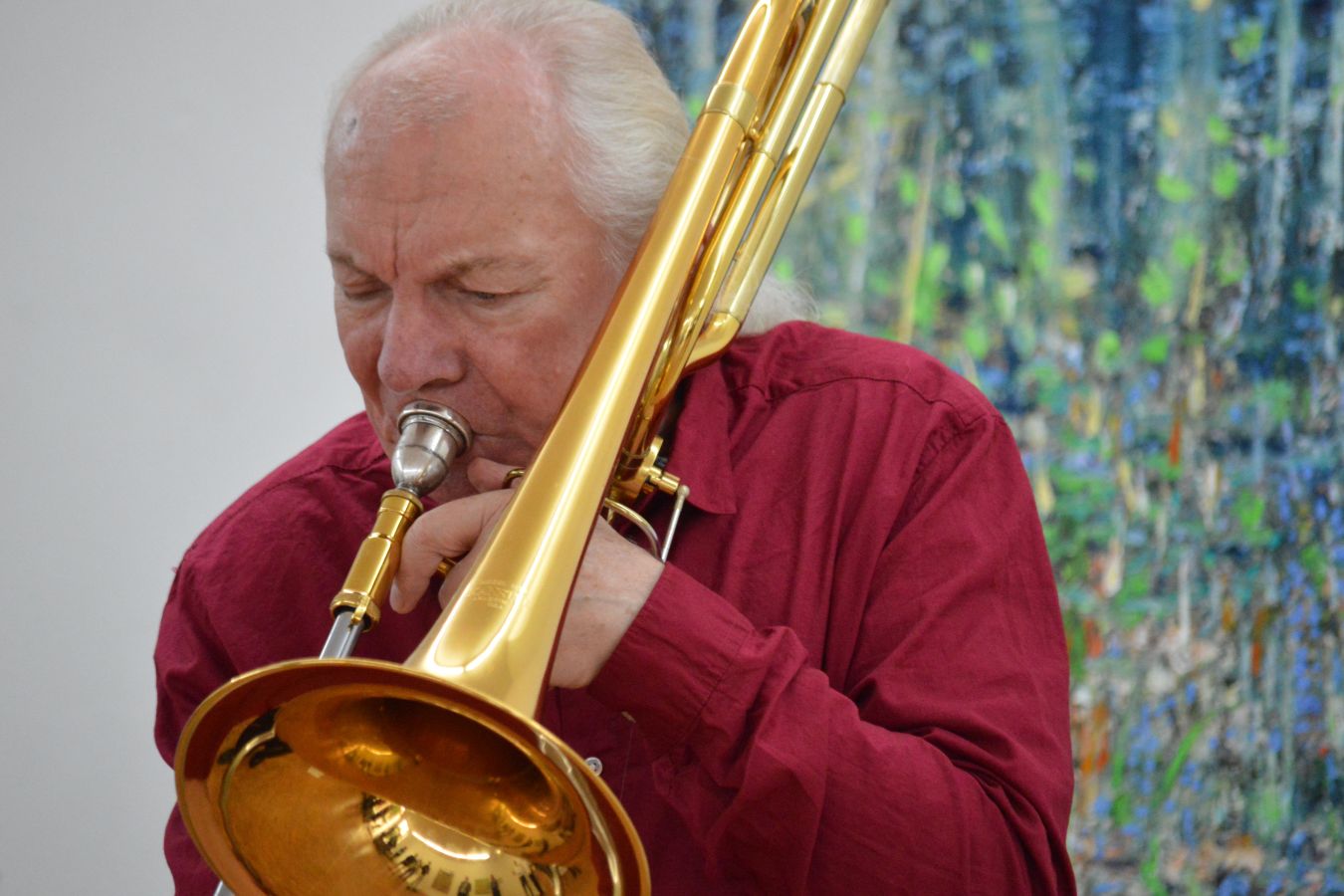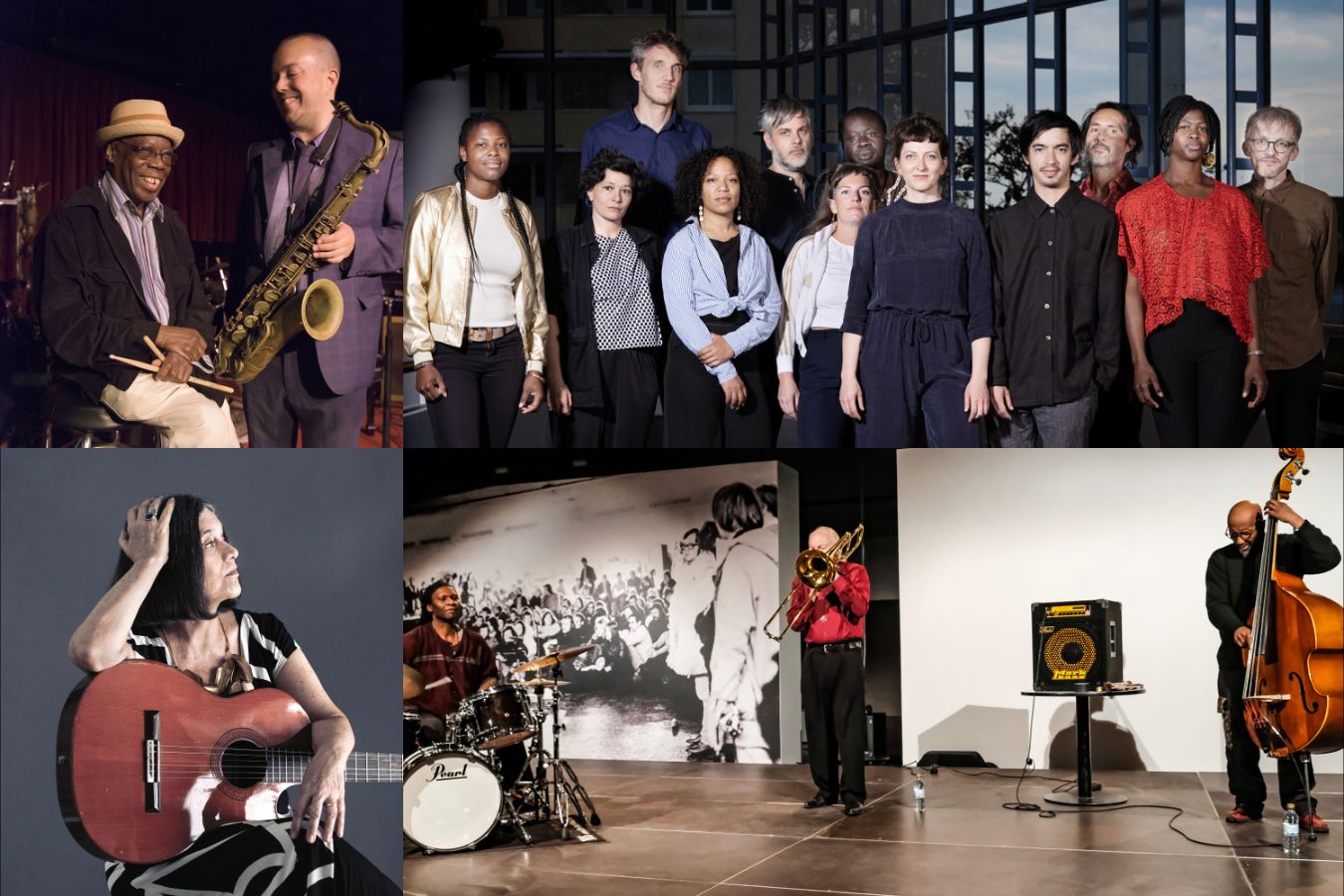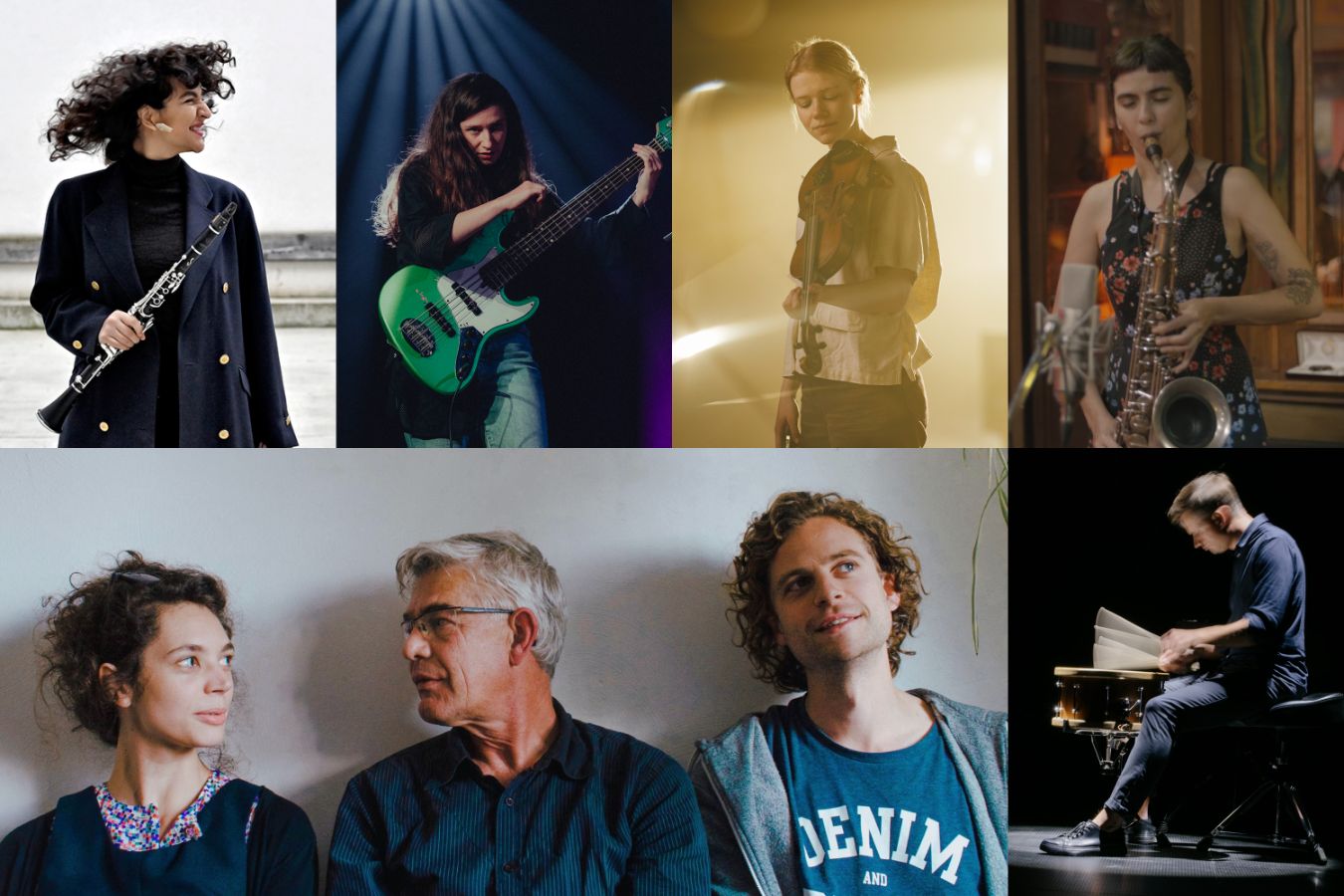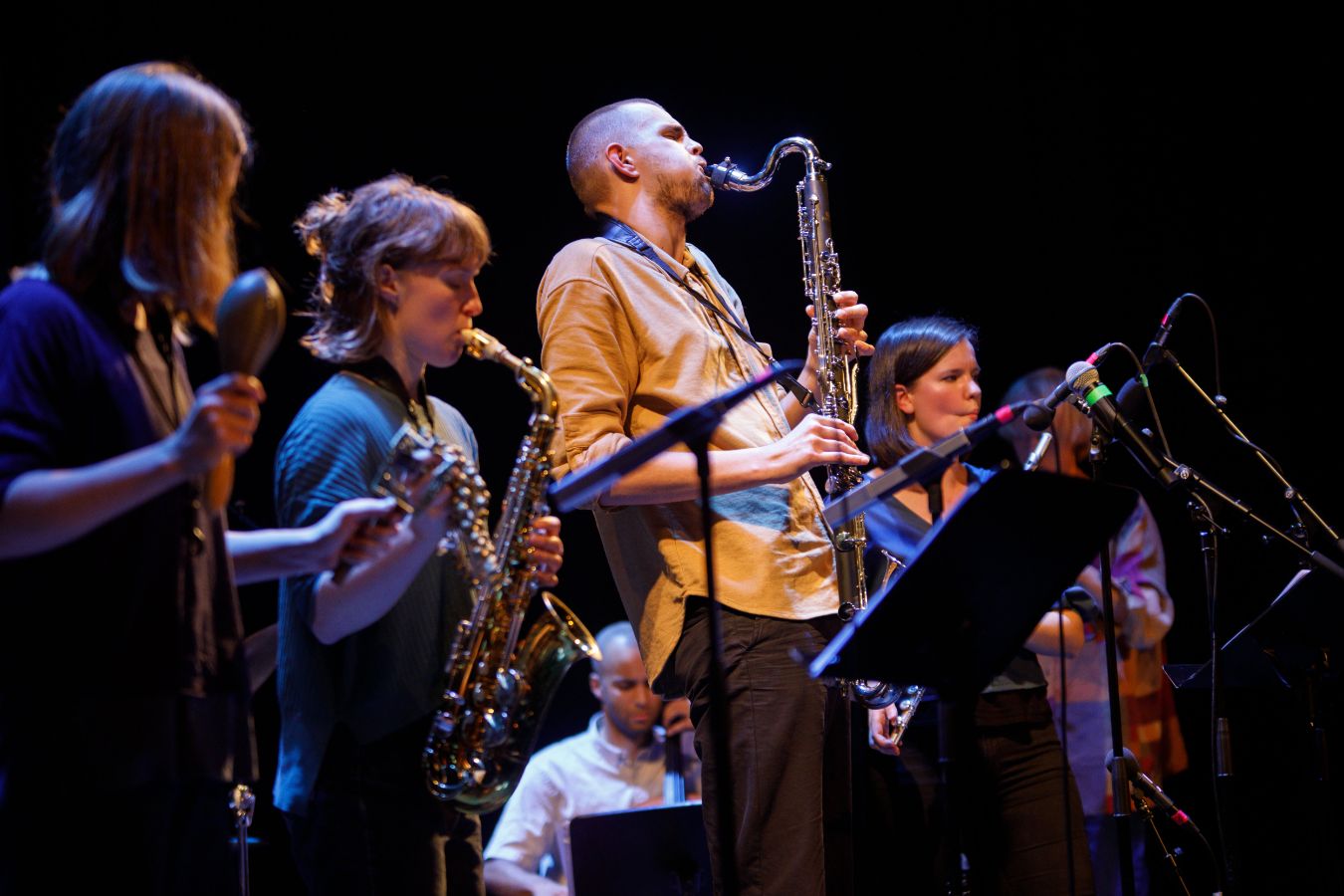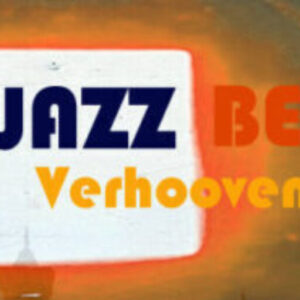Jazzfest Berlin 2023 Programm
Jazzfest Berlin 2023 – Musicians – Bands on Stage
Jazzfest Berlin 2023 Programm + Eindruck
Jazzfest Berlin 2023 Programm + Eindruck
Es stand zu befürchten, auf „nur Begeisterte“ oder „nur Geschockte“ zu treffen, es stand zu befürchten. In der Nachlese ist in mir ein Gemischtwarenladen aus Erstaunen Begeisterung und Euphorie und innerer Migration, Stummseligkeit und Trotz entstanden, das beginnt jedes Mal Wochen vor dem Fest, da du an die vermeintlichen Highlights nicht herankommst, die Karten für die vermeintlich besten Acts schon vergriffen sind.
Eh du das Jazzfest auf dem Schirm hast – du regelmäßig nach dem Fest vor dem Fest sagst, und kümmere dich halt früh genug – und ruf in den Raum zu denen, die dir die Karten vor der Nase wegschnappen: The Jazz is dead. Und zu denen, die du nie sehen wirst auf dem Festival: The Jazz is not dead, Jazz is ahead und nochmal zu denen, die es dir vor der Nase wegschnappen: The Jazz is downunder – allein, es nützt nichts, das zu sagen, sie kommen erst recht.
Der erste Eindruck soll trügerisch sein – wie jedes Jahr betrittst du die Festspielhallen und was gleich auch auffällt: dir gehört der Zutritt untersagt, du bist inzwischen einer von denen, was seit Jahren beklagt wird: Jazz sei etwas für alte weiße Männer mit Hut. Die tun allwissend und halten ihre Nase nicht hinter dem Jackett-Kragen verborgen, sondern zeigen sie jedem ungefragt: hier ich, weiß wie Naseweis. Ich weiß Bescheid, ich erkläre das mit dem Jazz noch einmal – von vorn.
Schon bist du raus, es gibt nichts zu erklären, hör es dir an: es soll Spaß machen und muss nicht immer richtig klingen, sagt das Kind. Das war eins der Kinder, die zu dreißig den Saal bespielten mit Gesang in einem opulenten und barocken Konzert, das ein großer Zirkus war ohne Clown und ohne Hut, aber mit so einigen Artisten, die konnten sogar Bebop.
Nun halt mal den Rand und setz dich hin – ausgerechnet am äußersten Platz, das bedeutet sich noch mehr als fünfmal erheben, um die reinzulassen, die wie immer zu spät kommen. Der alternde Mann hier, ich, stellt sich hin, setzt sich, stellt sich wieder hin. Und schaut in die Runde:
Die Kinder also, die für die Zukunft. Im Publikum weit und breit, was die Saal-Aura betrifft, alternde Jazz-Fans, wenn nicht ältere. Hier also seid ihr, will ich rufen. Nirgends sieht man euch, hier aber. Beim Jazz-is-Dead-Fest im Festspielhaus von Fritz Bornemann – ein Sinnbild für „Demokratische Architektur“, entsprechend 2014 in den Besitz des Bundes übergegangen – so sichert man Spielstätten für demokratische Kultur – Jazz is dead, Jazz is alive. Jazz is top. Jazz is pop.
Die Themen: demokratische Kultur eingerahmt von Generationen, besser: ein Brückenschlag zwischen den Generationen, das erste Jazzfest, das selbst im 60igsten Jahr steht und mehr als 70 Jahre umspannt, von neun Jahre jung (jüngstes Kinderchormitglied) bis 85 Jahre jung (Alexander von Schlippenbach), gleich im ersten Konzert: das Eröffnungsduo von Sylvie Courvoisier und Mary Halvorson, zwei Frauen des Jazz, hörst du den Unterschied – nein. Siehst du den Unterschied: welchen.
Lass uns fünfzig Jahre weiterdenken, dann haben sich solche Fragen hoffentlich erübrigt.
Thema drei: wie immer: was ist Jazz? Er kommt wohl aus Chicago … ist alles Jazz oder ist das alles nicht Chicago – Fragen wie aus dem Anfang des Festivals, 1964 fand das erste Festival unter der Leitung von J.E. Behrendt statt – 1964 erblickte ich das Licht der Welt. Ich hatte Beethoven gehört im Bauch der Mutter und Klaus Doldinger. Seitdem glaube ich weder, noch sehe ich, dass der Jazz keine Bedeutung hat, sondern ich vorschnell altere bei all der Aufregung um ihn, während er sich verjüngt und verändert und eben mehr ist als nur Shake your Hands oder ruf nochmal Amazing. Jazz ist pop.
Du kannst sagen was du willst. Das war ein großartiges Programm, nicht nur auf dem Papier.
Unter der Leitung von Nadine Deventer, lass uns zurückblicken nach 2018 – Der Jazz ist von einem Gleichgewicht weit entfernt im Interview der SZ mit Jan Kedves, 5 Jahre her. [lesbar dort die Unverhältnismäßigkeit von Engagement und Leistungserbringung im Bezug auf Was kann wer – unterstellt auch, dass Frauen mehr erbringen müssen im Verhältnis, allein, wie sich das Raunen der Männer anhörte und anfühlte – gleich auch: fünf Jahre weiter heißt es: es wird besser, aber: es dauert – wie kann man das beschleunigen – wie soll man Parität herstellen – wie?]
Ich habe das am Beispiel der Gitarristen gesehen: in der Liste der 1177 Jazz-Gitarristen gibt es vielleicht 30 Gitarristinnen – eine bedrückende Aufzählung. Allein, heißt es, es geht um die Musik. Sowohl als auch – Die Festspiele der Musik. Nun setz dich endlich hin – gleich spielen Sylvie Courvoisier und Mary Halvorson.
Till Lorenzen: ja, das waren die ersten Töne des Festivals – Courvoisier macht keine Gefangenen – auf eine gewisse Art und Weise – mal ehrlich — und … relax das mal
Ahja okay, das macht das Ohr frei… sie sind mehr am Grübeln und am jaja find ich „ja total spannend“ im Gespräch dann die „Offenbarung“, sie betrachten Klavier und Gitarre als Saiteninstrumente und spielen in Freundschaft – we love shopping, we love eating, we love playing … die da so viel spricht, ist die so nüchtern und kontrolliert sein soll – sie reden viel / nicht halb so komplex wie die beiden spielen – und: es fällt schon auf: es sind mehr Frauen auf der Bühne – sie sind nicht mehr „die Quotenfrauen“, wir hören eben nicht mit geschlossenen Augen – wir sehen eben auch, dass es von Frauen kommt – das aber war es nicht, was ich sah beim Hingucken, ich sah, dass sie sehr konzentriert vorgingen und es nicht so sehr überraschend war, und es nicht so viel Raum gab, wie angedeutet – es wirkte im Saal eher hermetisch – über das Tape höre ich plötzlich die angesprochenen Räume [etwas ganz anderes, hm] – ein Verwirrspiel, ein Vexierspiel – eine Tatsachenumkehr – Space
Sie haben keine zehn Minuten gespielt, da hat es den ersten erwischt. Er steigt wutentbrannt über die Sitzreihen nach draußen und verkündet laut: bevor mir schlecht wird, gehe ich lieber. Der Feinschmeckertyp. Vorne links sehe ich wippende Köpfe – das sind die, die immer wippen, ob da Rhythmus ist oder nicht, Imagination macht schon auch Rhythmus, ich habe das für mich Distanzmusik genannt. Hoch akrobatisch, ausgefeilt und im Sinn von Beethovenschen Harmoniegerüsten abgelöst, modern, asynchron und eben auch multiplex wie sehr komplex im unbegreiflich eigenen Disharmonieraum – wobei was heute noch disharmonisch klingt, sich über die Zeit normalisiert – nicht wahr?
Als wir draußen standen zum nächsten Act, fiel es mir auf: diese Musik kannst du mit geschlossenen Augen viel besser hören als sehenden Auges. Das liegt begründet in der Komplexität, es fordert umfassendes Zuhören, Reinhören, Anhören, alles was ablenkt, spielt der Verunsicherung oder dem Distanzabweiser in die Karten – dass er nach zehn Minuten ging, hatte nichts zu tun mit der Musik an sich, sondern mit der Aura der Musik im Saal – die angefüllt war von Nebengeräuschen, Gerüchen und diesen naseweißen Köpfen mit oder ohne Hut – Frage: braucht es, um das zu verstehen, Kritik?
Hör dir die Aufnahme vom Rundfunk noch einmal an, du denkst, es kommt von CD, so klar und so deutlich und so fein. Das war live ein anderes Erleben. Es wurde auch mir anstrengend – ob das mit den Raumwellen, der Akustik, der Gleichzeitigkeit von sich überschlagenden Tonwellen zu tun hatte? Mit dem Sitzwinkel vielleicht? Auch schien mir Sylvie Courvoisier zu sehr in den Hochtönen an der immer gleichen Stelle einzuhämmern – mit hartem und fast schon ärgerlichem Anschlag. Im Nachgang gehört – kann ich meinen Eindruck jedoch wieder zurücknehmen – es klingt aus dem Radio nahezu perfekt. [Ich kann mich kaum erinnern, das gehört zu haben]
Der Außen- wird zum Innenraum und verliert seine Maßstäblichkeit. [Ab circa Minute 45.] Die Tontechnik ist in der Rundfunkaufnahme bestechend – im Saal wurden die Töne überflügelt und überrollt von anderen Tönen – faszinierend, wie man sich irren kann – so, dicht auf dem Ohr, klingt es grandios – im Saal drohte ich zu erstarren, umgeben von Atmenden, vom Muff aus den Sitzreihen. Das hörst du nicht.
Zum Nachhören Markante Soundarbeit im Deutschlandfunk Sylvie Courvoisier und Mary Halvorson ! ganzes Konzert ! – Matthias Wegner
[Einschub:Bedenken – es muss an der Akustik des Saals gelegen haben – Hochtöner wirkten spitz, Bässe wurden geschluckt, es entstanden kaum Klangräume – eher stumpfes Stakkato erreichte das Ohr – vergleiche: hochwertige Kopfhörer versus Außenlautsprecher Smartphone – die Gesamtaufnahme noch einmal gehört – das ist etwas anderes, als ich in Erinnerung habe – kompakt, nah beieinander, stimmig und dicht – aufregend im Sinn von spannend]Zum Mithören – waren:
Im ersten Tape die Johann Sebastian Bach Adaption von Aki Takase und Alexander von Schlippenbach, sie kennen sich, sie wissen das zu schätzen, Bach hat es nicht anders verdient.
Dann Apparitions mit Kinderchor – was als Kitsch empfunden wird, lässt sich besser umschreiben mit barockem Zirkus – im ersten Tape spürst du die auseinandertreibenden Ansätze als Teile des Orchesters in kleinen Gruppen – hier drei Cellistinnen, dort draußen vor der Tür ein Trio – im zweiten Stück die gesamte Wucht – erst die galoppierende Band aus dem Bob ins Free-Gewühle – sagenhafter Absturz und mit Einsatz des Kinderchors hast du das, was das ganze barocke Zirkusgemälde zum Absturz bringt mit offenbar nicht jeden Ton treffenden Kinderchorstimmen – „es soll Spaß machen und muss nicht immer richtig klingen“ – Operation gelungen, das Publikum lebt, bebt und feiert dieses Generationen überspannende Werk
Ingrid Laubrock – Brandon Lopez – Tom Raney
- Karriere – in der U-Bahn gespielt bis die Lippen blau wurden – Punkt des Vertrauens | und man muss sich doch verstehen können (100 Leute passen rein) es ist so ein ganz anderer Austausch, ganz wichtig, wie empfänglich das Publikum wird – schon besonders – du schwitzt auch miteinander – gemeinschaftsbildend – ziemlich langer Set – wie sie wirklich dort arbeiten – ganz ganz tolle Energie – sehr sehr abwechslungsreich – sehr erzählerisch – ich muss die Musik jazzt hören – das Trio
Marthe Lea Band
- Ellen Arkbro just intonation szene & Johan Graden
Paal Nilssen-Love – oder was vom Small Talk bleibt, wenn du von den Sitzen gerissen wirst beim Hören von Circus – ganz ganz unglaublich zart – dieser Mut zum Risiko – den gesunden Quatsch auf die Bühne bringen – wahnsinnig gut zusammengekommen – sehr akrobatisch, son bisschen wie ein Clown der über die Bühne stürzt – eine gaaaanz lange Verbindung zum Jazz – sehr sehr früh mit dem Jazz in Kontakt gekommen – ein ganz interessanter Musiker – ganz ganz toll echt jetzt, ey, ganz wundervoll aufregend, die natürliche Moderation ganz wie im Circus ohne Clown – ich bin ganz einfach rausgeflogen, finde ich nicht so nett ganz und gar nicht
Das ganz besondes schräg klingende Instrument – Form der Leichtigkeit gefunden, um sich einfach nur zu freuen.
Separist Party
Henry Threadgill – sonic dreams – das ist ein in zwei Teilen dargestelltes Großereignis, weil im ersten Teil fast nichts geschieht, was nicht schon geschehen wäre und im zweiten Teil es wirklich aufregende Rhythmuswechsel gibt – bin jetzt bei Stunde vier des sechs Stunden Nacht Jazzereignisses, und bevor es die Tapes zum Nachhören nicht mehr gibt, schnell mal online gestellt. Widme mich der altersentsprechenden eigenen Besserwisserei und bin, will ich das wirklich sagen – überrascht – wie überrascht sich viele geben.
Lasse das jetzt und übergebe an die Verlinkung.
Manchmal zählen nur die Töne BR | So war das Jazzfest Berlin Jens Lehman RBB |
Methusalems und Jungspunde Gregor Dotzauer Tagesspiegel | 60. Jazzfest Berlin: Kinderstimmen und ein 85-jähriger Avantgardist sorgen für Gänsehaut Karim Saab Märkische Allgmeine
WDR Jazzfestplayer 2023 – Konzert vom Samsatg aus dem Festspielhaus incl. Henry Threadgill und dem Free Jazz-Kollektiv Irreversible Entanglements.
FESTIVAL PROGRAMM – THURSDAY –
Donnerstag
2.11.2023
- TalkArtists’ Talkmit Antonin-
Tri Hoang, Romain Clerc-Renaud, Gudrun Luise Gierszal, Eva Spaeth, Nelly Thea Köster, Jakob Fraisse
17:00 Haus der Berliner Festspiele, Oberes Foyer - Courvoisier / Halvorson // Apparitions // Takase / von Schlippenbach
18:00 Haus der Berliner Festspiele, Große Bühne - Lopez / Laubrock / Rainey„No es la Playa“
20:00 A-Trane - Fuensanta & Ensamble Grande
22:30 Haus der Berliner Festspiele, Seitenbühne - Valentin Ceccaldi’s Bonbon Flamme
22:30 Quasimodo
FESTIVAL PROGRAMM – FRIDAY
Freitag
3.11.2023
- TalkArtists’ Talkmit Mike Reed,
Susana Santos Silva, Paal Nilssen-Love
16:30 Haus der Berliner Festspiele, Oberes Foyer - Mounir // Frith / Santos Silva / Portugal // Nilssen-Love
17:30 Haus der Berliner Festspiele, Große Bühne - Joanna Duda Trio „Fumitsuke“
20:00 A-TraneTickets - TalkArtists’ Talkmit Henry Threadgill
20:45 Haus der Berliner Festspiele, Kassenhalle - Sonic Dreams: ChicagoNatural Information Society
// Separatist Party // Bitchin Bajas
21:30 Haus der Berliner Festspiele, auf der Bühne - Steph Richards„Power Vibe“
FESTIVAL PROGRAMM – SATURDAY
Samstag
4.11.2023
- Film & Gespräch – Step Across the Border
– A ninety minute celluloid improvisation by Nicolas Humbert and Werner Penzel
14:30 Haus der Berliner Festspiele, Kassenhalle - Film & TalkKurzfilm & Artists’ Talk mit Silke Eberhard und José Davila
16:40 Haus der Berliner Festspiele, Oberes Foyer - Debacker // Arkbro / Graden // Threadgill’s Zooid
/ Eberhard’s Potsa Lotsa XL
18:00 Haus der Berliner Festspiele, Große Bühne - Marthe Lea Band
20:30 A-Trane - Irreversible Entanglements // Clay Kin
22:00 Haus der Berliner Festspiele, Seitenbühne - Draksler // Amba / Cajado / Takara
22:00 Haus der Berliner Festspiele, Kassenhalle - Banquet of Consequences
SATURDAY – im Radio beim SWR ab 20:03 Uhr
LIVE AUS BERLINJAZZFEST BERLIN 2023 BR Klassik an 20:03 Uhr
RBB-Online.De mit Bericht und Live-Nacht | WDR 3 Zehn Stunden Live vom Jazzfest Berlin – Das Konzert steht für 30 Tage zum Nachhören bereit
FESTIVAL PROGRAMM – SUNDAY
Sonntag
5.11.2023
- Film & Gespräch – Tastenarbeiter – Alexander von SchlippenbachEin Film von Tilman Urbach
11:00 Delphi Filmpalast - Ambarchi / Berthling / Werliin„Ghosted“
15:00 Kaiser-Wilhelm-Gedächtnis-Kirche - Preisverleihung & PanelVerleihung Albert-Mangelsdorff-Preis 2023 und 50. Jubiläum der Deutschen Jazzunion – Festakt an Conny Bauer
Eine Veranstaltung der Deutschen Jazzunion
15:00 Haus der Berliner Festspiele, Kassenhalle - TalkArtists’ Talk mit Joyce Moreno
16:00 Haus der Berliner Festspiele, Oberes Foyer - McHenry / Cyrille // Red Desert Orchestra // Bauer / Parker / Drake // Moreno
17:00 Haus der Berliner Festspiele, Große Bühne - Melting Pot // Omawi
19:00 A-Trane - Andreas Røysum Ensembl
ENGLISH VERSION
It was to be feared that I would meet „only the enthusiastic“ or „only the shocked“, it was to be feared. In the aftermath, a mixed bag of astonishment, enthusiasm, euphoria and inner migration, dumbfoundedness and defiance arose in me, which starts every time weeks before the festival, because you can’t get hold of the supposed highlights, the tickets for the supposedly best acts are already sold out.
Before you have the jazz festival on your radar – you regularly say after the festival before the festival, and just get there early enough – and shout into the room to those who snatch the tickets from under your nose: The jazz is dead. And to those you will never see at the festival: The Jazz is not dead, Jazz is ahead and again to those who snatch it from under your nose: The jazz is downunder – alone, it’s no use saying that, they’re coming all the more.
The first impression should be deceptive – as every year, you enter the festival halls and what is immediately apparent: you are not allowed in, you are now one of those people who have been complaining for years: Jazz is for old white men in hats. They act all-knowing and don’t keep their nose hidden behind their jacket collar, but show it to everyone without being asked: here I am, white as a whip. I know, I’ll explain the jazz again – from the beginning.
You’re already out, there’s nothing to explain, listen to it: it should be fun and doesn’t always have to sound right, says the child. That was one of the children, thirty of them, who played the hall with singing in an opulent and baroque concert, which was a big circus without a clown and without a hat, but with some artists who could even bebop.
Now pull over and sit down – in the outermost seat of all places, which means standing up more than five times to let in those who, as always, arrive too late. The ageing man here, me, sits down, sits down, sits down again. And looks around:
So the children, the ones for the future. In the audience far and wide, as far as the hall aura is concerned, ageing jazz fans, if not older ones. So here you are, I want to shout. You can’t be seen anywhere else, but here. At the Jazz-is-Dead-Fest in Fritz Bornemann’s Festspielhaus – a symbol of „democratic architecture“, which became the property of the federal government in 2014 – this is how you secure venues for democratic culture – jazz is dead, jazz is alive. Jazz is top. Jazz is pop.
The themes: democratic culture framed by generations, better: a bridge between the generations, the first jazz festival, which itself is in its 60th year and spans more than 70 years, from nine years young (youngest member of the children’s choir) to 85 years young (Alexander von Schlippenbach), right in the first concert: the opening duo of Sylvie Courvoisier and Mary Halvorson, two women of jazz, do you hear the difference – no. Do you see the difference? Which one.
Let’s think ahead fifty years, then such questions will hopefully be superfluous.
Topic three: as always: what is jazz? He’s probably from Chicago … is it all jazz or is it all not Chicago – questions like from the beginning of the festival, in 1964 the first festival took place under the direction of J.E. Behrendt – I was born in 1964. I had heard Beethoven in my mother’s womb and Klaus Doldinger. Since then, I neither believe nor do I see that jazz has no meaning, but that I age prematurely with all the excitement surrounding it, while it is rejuvenating and changing and is more than just Shake your Hands or shout Amazing again. Jazz is pop.
You can say what you want. It was a great program, not just on paper.
Under the direction of Nadine Deventer, let’s look back to 2018 – Jazz is far from balanced in the SZ with Jan Kedves, 5 years ago. [read there the disproportionality of commitment and performance in relation to What can who – also assuming that women have to perform more in proportion, just how the murmur of the men sounded and felt – immediately also: five years later it says: it’s getting better, but: it takes time – how can you speed it up – how can you create parity – how].
I have seen this in the example of guitarists: in the list of 1177 Jazz-Gitarrists, there are perhaps 30 female guitarists – a depressing list. Alone, they say, it’s all about the music. As well as – the festival of music. Now sit down – Sylvie Courvoisier and Mary Halvorson are about to play.
Till Lorenzen: yes, those were the first notes of the festival – Courvoisier takes no prisoners – in a certain way – let’s be honest – and … relax this
Ah yes okay, that clears the ear… they are more brooding and yes yes I find „yes totally exciting“ in conversation then the „revelation“, they consider piano and guitar as stringed instruments and play in friendship – we love shopping, we love eating, we love playing … who talks so much, is supposed to be so sober and controlled – they talk a lot / not half as complex as the two play – and: it is already noticeable: there are more women on stage – they are no longer „the quota women“, we just don’t listen with our eyes closed – we just also see that it comes from women – but that wasn’t what I saw when I looked, I saw that they were very focused and it wasn’t so much of a surprise, and there wasn’t as much space as was implied – it seemed rather hermetic in the room – I suddenly hear the rooms mentioned on the tape [something completely different, hm] – a game of confusion, a puzzle – a reversal of facts – Space
They haven’t played ten minutes when the first one is caught. He climbs over the rows of seats to the outside in a rage and announces loudly: before I get sick, I’d better go. The gourmet type. At the front left I see bobbing heads – those are the ones who always bob, whether there’s rhythm or not, imagination also makes rhythm, I’ve called it distance music for me. Highly acrobatic, sophisticated and detached in the sense of Beethoven’s harmonic structures, modern, asynchronous and also multiplex as very complex in its own incomprehensible disharmonic space – whereby what still sounds disharmonic today normalizes over time – doesn’t it?
As we stood outside for the next act, it struck me: you can hear this music much better with your eyes closed than with your eyes open. This is due to the complexity, it demands comprehensive listening, listening in, listening, anything that distracts you plays into the hands of insecurity or distance deflectors – the fact that he left after ten minutes had nothing to do with the music itself, but with the aura of the music in the hall – which was filled with background noises, smells and those white-nosed heads with or without hats – question: do you need criticism to understand this?
Listen to the radio recording again, you think it’s coming from a CD, so clear and so distinct and so fine. It was a different experience live. It was also exhausting for me – was it to do with the room waves, the acoustics, the simultaneity of overlapping sound waves? Perhaps the angle of the seat? Sylvie Courvoisier also seemed to me to be hammering away too much in the high notes, always in the same place – with a hard and almost annoying attack. Having listened to it afterwards, however, I can take back my impression – it sounds almost perfect from the radio. [I can hardly remember hearing that]
The exterior becomes the interior and loses its scale. [The sound engineering is impressive in the radio recording – in the hall the sounds were overtaken and overrun by other sounds – it’s fascinating how you can get it wrong – it sounds terrific like that, close to your ear – in the hall I was in danger of freezing, surrounded by people breathing, by the muffle from the rows of seats. You can’t hear that.
[insertion:reservations – it must have been due to the acoustics of the hall – tweeters seemed sharp, basses were swallowed, hardly any sound spaces were created – rather dull staccato reached the ear – compare: high-quality headphones versus external speakers smartphone – listened to the overall recording again – this is something different than I remember – compact, close together, coherent and dense – exciting in the sense of thrilling].
To listen – including 6 hours of jazz night
In the first tape, the Johann Sebastian Bach adaptation by Aki Takase and Alexander von Schlippenbach, they know each other, they appreciate it, Bach deserves no less.
Then Apparitions with children’s choir – what is perceived as kitsch can be better described as a baroque circus – in the first tape you can feel the drifting beginnings as parts of the orchestra in small groups – here three cellists, there outside the door a trio – in the second piece the full force – first the galloping band from the bob into the free tangle – fabulous crash and with the use of the children’s choir you have that, which brings down the whole baroque circus painting with children’s choir voices that obviously don’t hit every note – „it should be fun and doesn’t always have to be right“ – operation successful, the audience lives, trembles and celebrates this work that spans generations
Ingrid Laubrock – Brandon Lopez – Tom Raney
Career – played in the subway until their lips turned blue – point of trust – and you have to be able to understand each other (100 people fit in) it’s such a different exchange, very important how receptive the audience becomes – very special – you sweat together too – community building – quite a long set – how they really work there – very very great energy – very very varied – very narrative – I have to hear the music jazzt – the trio
Marthe Lea Band
Ellen Arkbro just intonation szene & Johan Graden
Paal Nilssen-Love – torn from the seats when listening to Circus – very incredibly tender – this courage to take risks – bringing healthy nonsense on stage – came together incredibly well – very acrobatic son a bit like a clown falling across the stage – a very long connection to jazz – came into contact with jazz very very early – a very very very interesting musician – very very very very great very really really really really really really wonderfully exciting and natural moderstion very very very Circus two – I just flew out, I don’t think it’s that nice
The very special weird sounding instrument – found a form of lightness to just be happy.
Separist Party
Henry Threadgill – sonic dreams – this is a major event presented in two parts, because in the first part almost nothing happens that hasn’t already happened and in the second part there are really exciting rhythm changes – I’m now at hour four of the six-hour night jazz event, and before the tapes are no longer available to listen to, I quickly put them online. I’m devoting myself to my own age-appropriate know-it-all attitude and am, shall I say, surprised – how surprised many people are.
I’ll leave that now and hand over to the linking.
Manchmal zählen nur die Töne BR | So war das Jazzfest Berlin Jens Lehman RBB |
Markante Soundarbeit im Deutschlandfunk – Matthias Wegner
Methusalems und Jungspunde Gregor Dotzauer Tagesspiegel | 60. Jazzfest Berlin: Kinderstimmen und ein 85-jähriger Avantgardist sorgen für Gänsehaut Karim Saab Märkische Allgmeine
WDR Jazzfestplayer 2023 – Konzert vom Samsatg aus dem Festspielhaus incl. Henry Threadgill und dem Free Jazz-Kollektiv Irreversible Entanglements.

